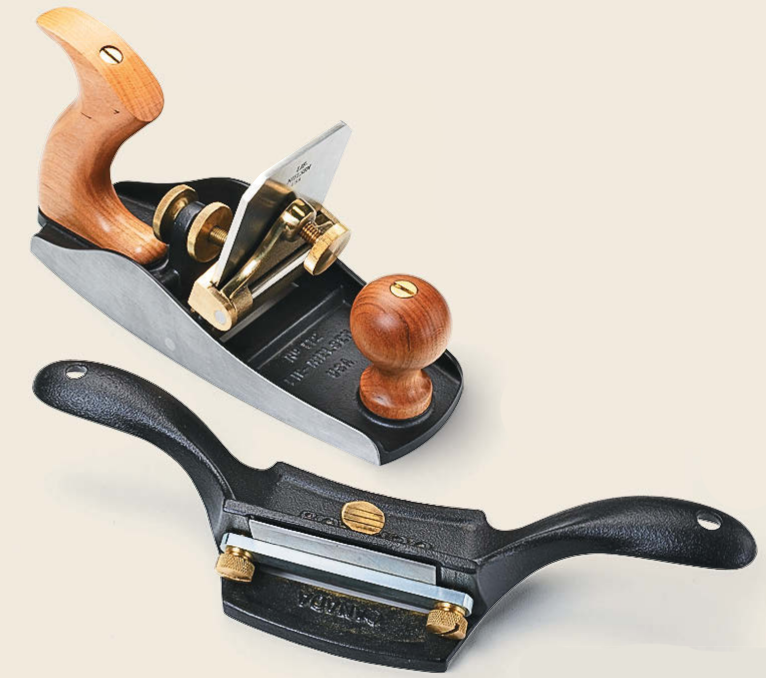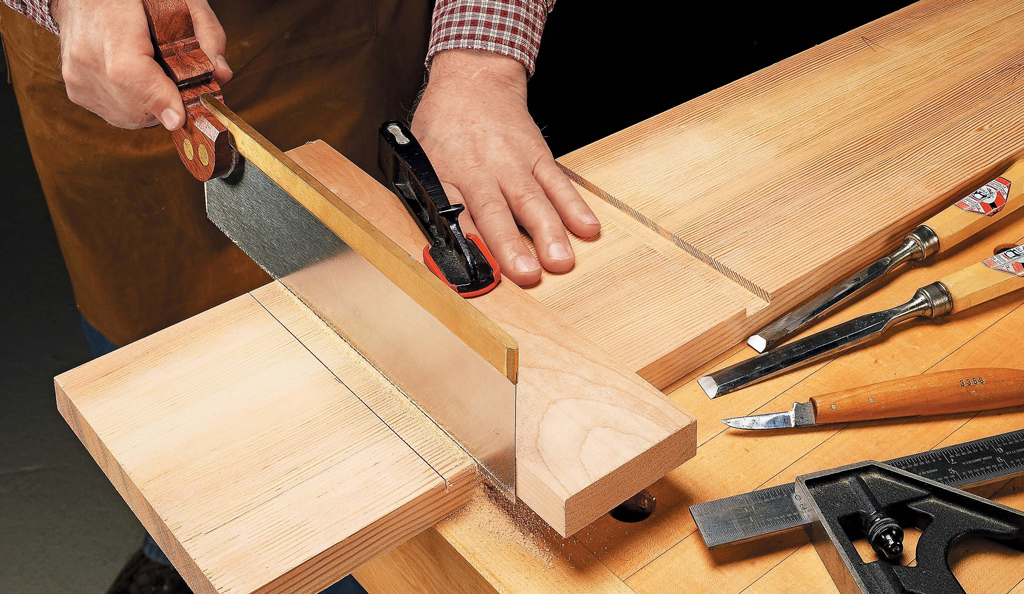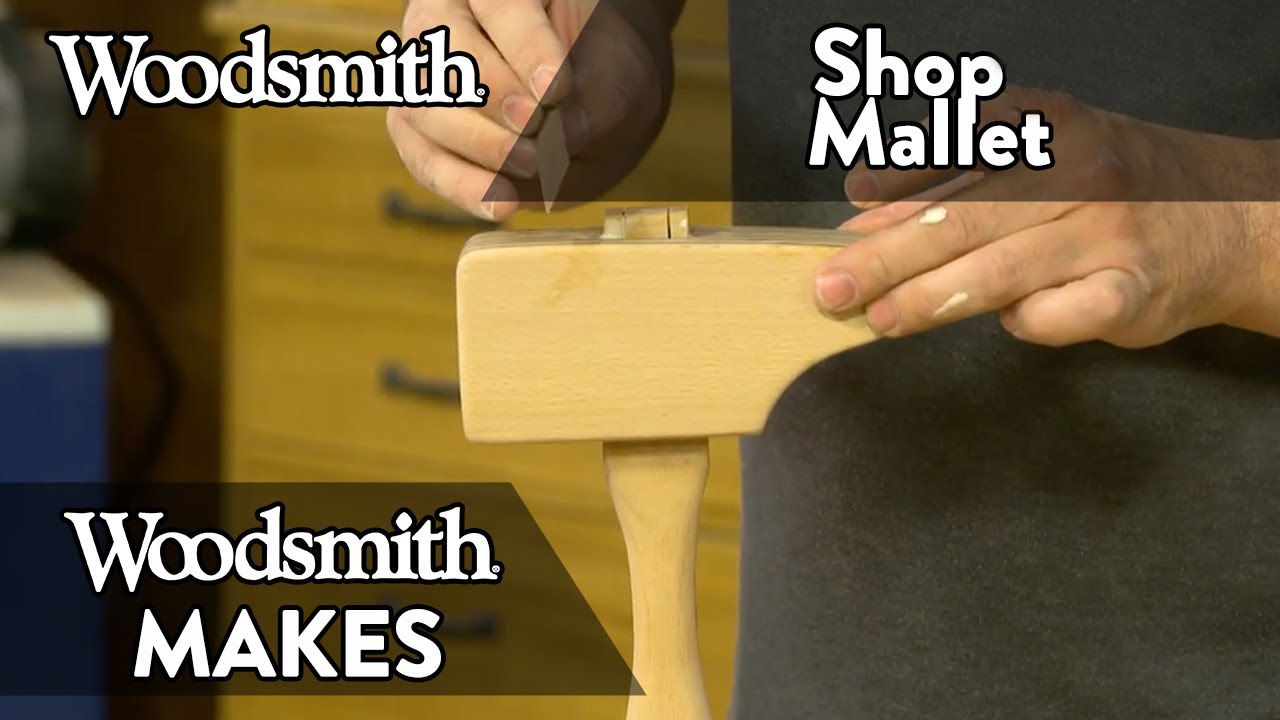
A hand-held scraper is a great tool for creating a perfectly smooth surface on a workpiece in preparation for finishing. But flexing and holding a hand scraper at the correct angle in order to smooth a surface can be tiring and uncomfortable, especially for long periods of time. For smoothing large areas, there are a couple of other scraping tools that get the job done quickly and with a lot less effort.

A scraper plane or a cabinet scraper, like those in the photo at left, can dramatically reduce the amount of time you spend sanding your projects. They work especially well on highly figured woods that are prone to tearout from planers, jointers, and other power tools. And as an added plus, these tools are a lot more comfortable to use than a traditional hand scraper.
CABINET SCRAPER
Cabinet scrapers are among the simplest of scraping tools. For years, the standard for cabinet scrapers has been the classic Stanley #80 scraper. Essentially, it’s nothing more than a holder for a hand (card) scraper. It features two wingstyle handles and a simple clamp to hold the scraper blade in place. A thumbscrew is tightened to flex the blade, saving wear and tear on your thumbs.
Although Stanley still makes this tool, in recent years other manufacturers have come out with their own versions, improving upon the original design. The cabinet scraper shown in the photos is made by Veritas.

Aside from preventing fatigue, one of the advantages of a cabinet scraper over a hand scraper is that it has a flat sole. This makes it easier to control the scraper and maintain a consistently flat surface as you’re smoothing a workpiece.
Cabinet scrapers are designed to hold the scraper blade at a single, fixed angle. This is fine for most scraping tasks. But for a little more versatility, you might want to take a look at a scraper plane.
SCRAPER PLANE
If you do a lot of scraping, or frequently work with figured woods, then you’ll probably want to consider a scraper plane. Scraper planes come in a few different sizes and designs. The large plane shown on this page is the Lie-Nielsen #112, based on another classic Stanley design. ( Veritas also makes a similar scraper plane.)
With traditional knob and tote handles, a scraper plane looks and feels more like a conventional bench plane. But unlike a bench plane, a scraper plane holds a thick scraper blade instead of a plane iron.

The blade is nearly 3" wide, allowing you to work even large surfaces quickly. Combined with the mass of the plane, this tool works almost effortlessly, making it the perfect choice for tasks like smoothing a large tabletop.
SCRAPER BLADE. Unlike hand scrapers and cabinet scrapers, the thick blade of the Lie-Nielsen scraper plane isn’t designed to be flexed or bowed in use. Instead, the large brass thumbscrew simply clamps the blade in place.
In addition, the blade can be sharpened with or without the customary burr on the edge. It’s actually a little easier to control the scraper plane without the burr. Once you have a feel for the plane, you can add a burr to the edge for a more aggressive cut.

The goal when using a scraper plane is to take thin shavings. To set the blade depth, just loosen the thumbscrew slightly and slip a sheet of paper under the front of the plane. Then tighten the thumbscrew against the blade.
ADJUSTABLE ANGLE. The biggest advantage of a scraper plane, however, is the fact that the blade angle is adjustable. Depending on the task at hand, the blade can be set anywhere from a vertical position to leaning forward 25°. (See the How-To box below for more.)
Whether you choose a cabinet scraper or a scraper plane, I think you’ll find either of these tools a big step up in performance from traditional hand scraping.
How-To: Set the Correct Angle for the Job
One of the best features of the large scraper plane shown below is the ability to change the angle of the blade for different tasks.

At the factory, the blade is set so it angles forward about 15° from the vertical position. This results in a smooth cut with short, paper thin shavings. I use this angle for cleaning up machine marks on straight-grained wood.

Tilting the blade forward even more will take a deeper cut. This angle will produce long curls, almost like a low-angle plane. You could use this angle for smoothing an uneven surface, like a glued-up tabletop.

Setting the blade to a vertical position decreases the depth of the cut. This will produce fine scrapings, almost like sawdust. I use this setting when smoothing wood with highly figured grain.
Related:
https://www.woodsmith.com/review/best-low-angle-block-planes/












